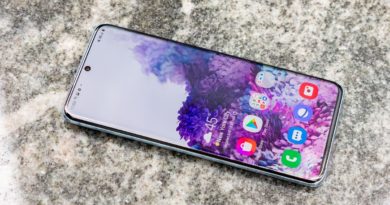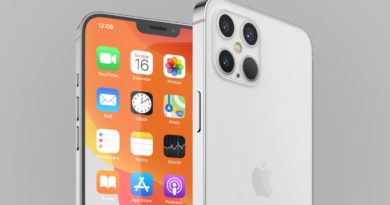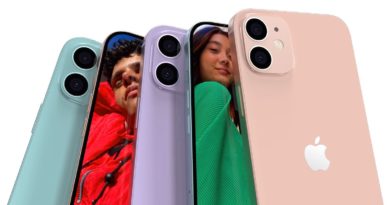iPhone Flip: Everything we know about Apple’s foldable phone plans
While we didn’t get an iPhone 12 Flip this year, and rumors that the iPhone 13 Flip isn’t going to see the light of day, there’s no doubt Apple is getting invested in flexible displays. That means that, eventually, it’ll release a handset with one.
The questions, of course, are when we’ll see it, and what it’ll look like. Patents and concepts from independent designers give us clues, but ultimately, Apple is not a company known for taking design risks. By the time it does release a foldable phone, you can be sure the technology will be more established than it is today.
So what do we know about Apple’s foldable phone plans? We’ve compiled the latest reports and concepts in this guide. Overtime, we hope to gain a clearer picture of what is sure to be the most revolutionary iPhone yet when it finally does see the light of day.
iPhone Flip news (Updated December 18)
- A new report from Digitimes claims that Apple won’t be releasing a foldable iPhone until 2022, quashing rumors that we may see an iPhone 13 Flip.
- A report claims iPhone Flip devices are undergoing testing at Foxconn Taiwan, suggesting its release may be closer than we thought
- A new patent suggests the foldable iPhone could have a secret weapon: A flexible version of the super-strong ceramic shield display used on the iPhone 12
When will Apple launch a foldable iPhone?
We’re not expecting another iPhone launch until the iPhone 13, which is currently scheduled for sometime in September 2021. While we don’t know a great deal about those phones, it’s not likely we’ll see the iPhone Flip anytime before this. Barring the iPhone SE (2020), Apple has always bundled its iPhone hardware announcements into one big event.
Unfortunately a report from Digitimes suggests that the iPhone Flip won’t arrive until 2022, which means we’d likely be waiting until the launch of the iPhone 14 in September of that year. And chances are this will be the case, because if Apple was planning to introduce a foldable phone in 2021, we would have heard some indication by now.
Given how relatively quiet the iPhone rumor mill has been on the foldable front, we could be at least two years away from Apple joining the ranks of the Samsung Galaxy Z Flip and upcoming Galaxy Fold 2. In fact, LG may even release a foldable and/or rollable device before Apple does.
pic.twitter.com/RN93E1bRGtJune 13, 2020
Jon Prosser of Front Page Tech asserted on Twitter that Apple is actively working on a foldable iPhone, but also said we wouldn’t get to see it in 2020. However, the device Apple is trialing is more of a traditional, dual-display foldable, according to Prosser, without a single, flexible screen. Such a design is certainly more feasible than an elaborate, expensive and complicated design like the Galaxy Fold’s, so it’d seem quite possible Apple could have such a product ready in 2021 if that’s the route it chooses to go.
A new leak from September 2020 via Chinese social media site Weibo suggests that Apple has placed a large order of foldable screens from Samsung, which could mean that the iPhone Flip is one step closer to reality, and could be primed for release in the near future.
We’ve also head rumors that the device is being tested at Foxconn Taiwan, suggesting it’s much closer to launch than some people may have thought. But until we hear from Apple, we’ll never know for sure, especially since we don’t know how much experimenting and testing Apple still needs to do.
What could a foldable iPhone look like?
Again, this is another case where it really is too early to say — but thankfully, Apple’s own patent filings have provided us with some rough ideas.
In February, one Apple patent emerged that would theoretically allow the foldable display to bend in the middle without creating excessive stress on the panel. Inside the hinge, the screen would bow out in a sense, creating more of a gradual curve than a hard crease. The hope is that such a design would assist in durability and extend the life of the display. It’s worth noting the Galaxy Z Flip actually incorporates a design not too dissimilar from this.

In March, we became aware of another Apple patent describing a “joint operating mode” which would allow a single-screen device to be supplemented by a magnetically-connected secondary display. In theory, this mode would allow independent devices to join to comprise one shared space, which doesn’t really pertain to the whole singular foldable panel idea. It’s more Microsoft Surface Duo than Samsung Galaxy Fold.

Most recently, we learned of a patent originally filed in the second quarter of 2018 and unearthed by PatentlyApple, which depicts a device with a flexible display that folds closed yet still leaves a small strip at the bottom exposed for easy access to notifications and contextual information. Think of it like a miniature Touch Bar, similar to what’s available on the MacBook Pro.
If we go back to last year, we can see earlier ruminations on foldable designs from Apple, including a patent for a tri-folding display. And if we extend even further back to 2016, we can see one of the earliest foldable iPhone patents, courtesy of MacRumors, depicting a vertically-folding handset similar in orientation to the Galaxy Z Flip and Motorola Razr.
Those who follow tech rumors know that patents aren’t previews of products destined for the market. But one 3D mockup posted by a YouTube account called #iOS beta news seemed to ignite the public’s imagination back in May. Called the iPhone Flip, this fictional handset is probably so named because it looks like a Galaxy Z Flip copycat, down to its slim bezels, centrally-positioned hole-punch camera cutout, minimal exterior display and vertical orientation. It’s a design we could envision Apple actually releasing, at least with more fine tuning beyond the rough idea presented here.
However Apple’s first foldable iPhone takes shape, Cupertino won’t be able to go it alone. Over the last three years, we’ve heard competing rumors that Apple has been in talks with both LG and Samsung to supply the flexible displays for whatever device it ultimately winds up launching. In March 2019, it was reported by Korean media (via MacRumors) that Samsung Display sent Apple panel samples for analysis.
The memes are funny — but it doesn’t look like they just stuck two phones together. Even though they’re two separate panels, when the displays are extended, it looks fairly continuous and seamless.June 15, 2020
But what if Apple didn’t go with a flexible display for its first folding iPhone, and opted instead for a dual-panel approach like the Surface Duo? That’s a possibility recently posed by Jon Prosser of Front Page Tech, who suggested Cupertino has prototyped such a design. Prosser says this device retains the iPhone 11’s rounded appearance, but incorporates a hinge, and that the two separate screens come together fairly seamlessly when outstretched.

We also saw a patent back in October which suggests the iPhone Flip could come with an upgraded version of the iPhone 12’s ceramic shield. It would be specifically designed for a flexible display, and consist of four layers: a cover layer, a hardcoat layer, an inner surface, and a transparent support layer. That support layer could even be made of glass or sapphire for additional strength.
There’s also been speculation that the display could “heal” itself thanks to a “self-healing material” layer that would minimize the appearance of scratched or dents.
There’s no guarantee Apple will launch such a handset, of course, but Prosser’s report reminds us that the firm’s first foldable phone could play out a number of ways. While flexible panels are all the rage these days, dual-screen hardware could ultimately win out if Apple isn’t enamored with the reliability, durability or cost of a device with a single, folding screen.
What would a foldable iPhone cost?
This is easily the toughest question to answer, both because price has never factored into what few foldable iPhone rumors there are, and because the device’s cost will largely depend on how Apple approaches the design.
Consider that the Galaxy Fold debuted for $1,980 with a 7.3-inch tablet-like display when unfolded, and a tiny 4.6-inch panel on the outside. Just six months later, the Galaxy Z Flip released with a more vertically-proportioned 6.7-inch screen coated in Ultra-Thin Glass for better durability for $600 less.
If Apple opts for a smaller and cheaper foldable, the phone’s price may not be a far cry from premium handsets like the $1,099 iPhone 11 Pro Max. However, if the foldable iPhone is intended as a phone that can become a tablet when needed, like the Galaxy Fold, it’s certainly possible the price could well exceed those of Apple’s more conventional smartphones.
Outlook
There’s so much we’ve yet to learn regarding Apple’s foldable iPhone plans, but one thing is for certain: Whatever strategy Apple takes in developing its first foldable phone will likely dictate the trajectory of the industry.
Samsung may have been the first to the punch with the Galaxy Fold, but even it is still experimenting with unique form factors in a bid to discover which best speaks to users’ wants and needs. Apple has a history of instituting these vast sea changes in the mobile market with every release: the abandonment of the headphone jack, elimination of bezels and adoption of the notch were all trends kicked off by iPhones. And although 5G handsets have been releasing for about a year now, the iPhone 12 as the first 5G range will undoubtedly provide most users’ first experience with next-generation networks.
Ultimately, foldable tech and the smartphone industry at large has a lot riding on how Apple approaches the dream of an iPhone that folds.


